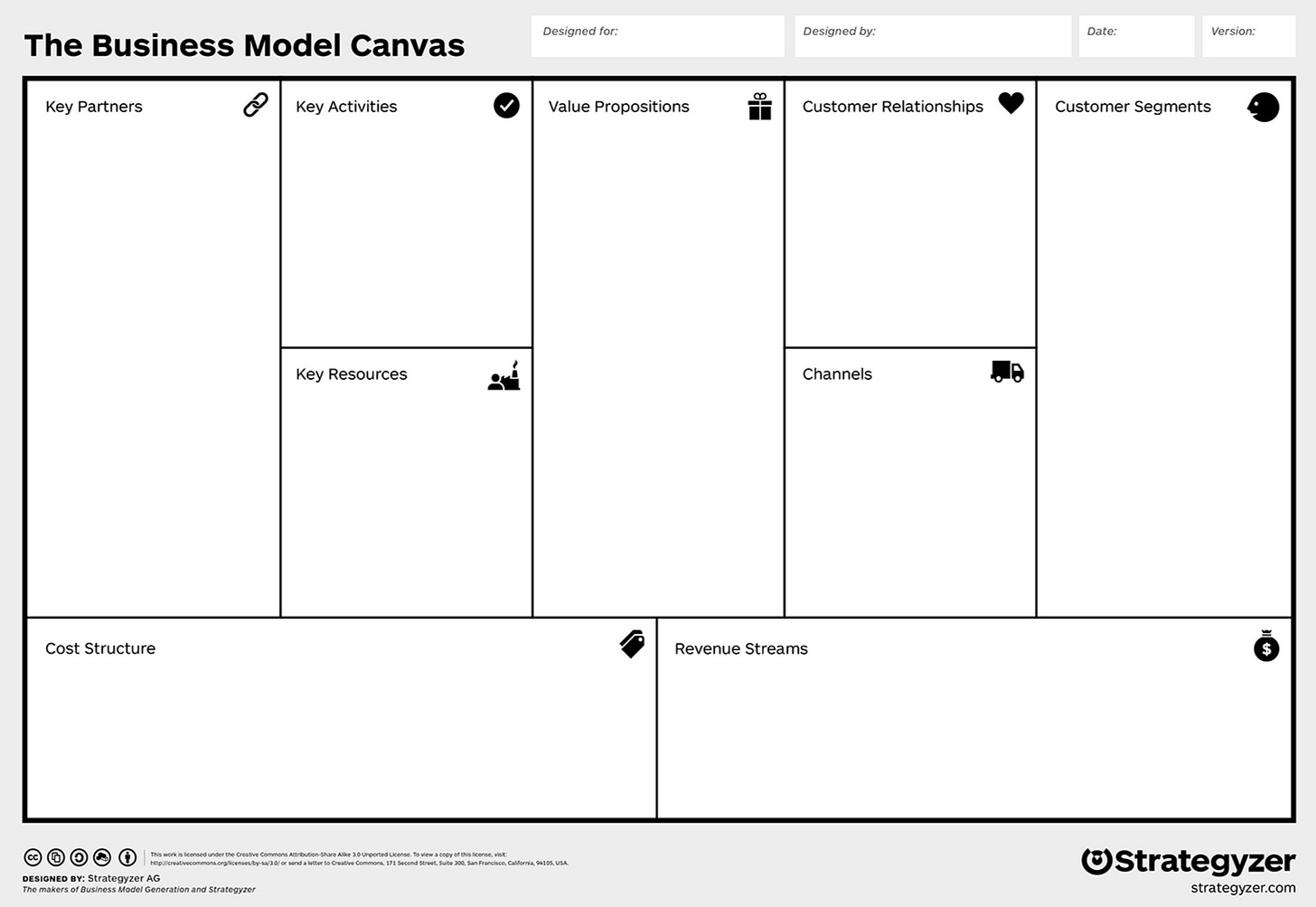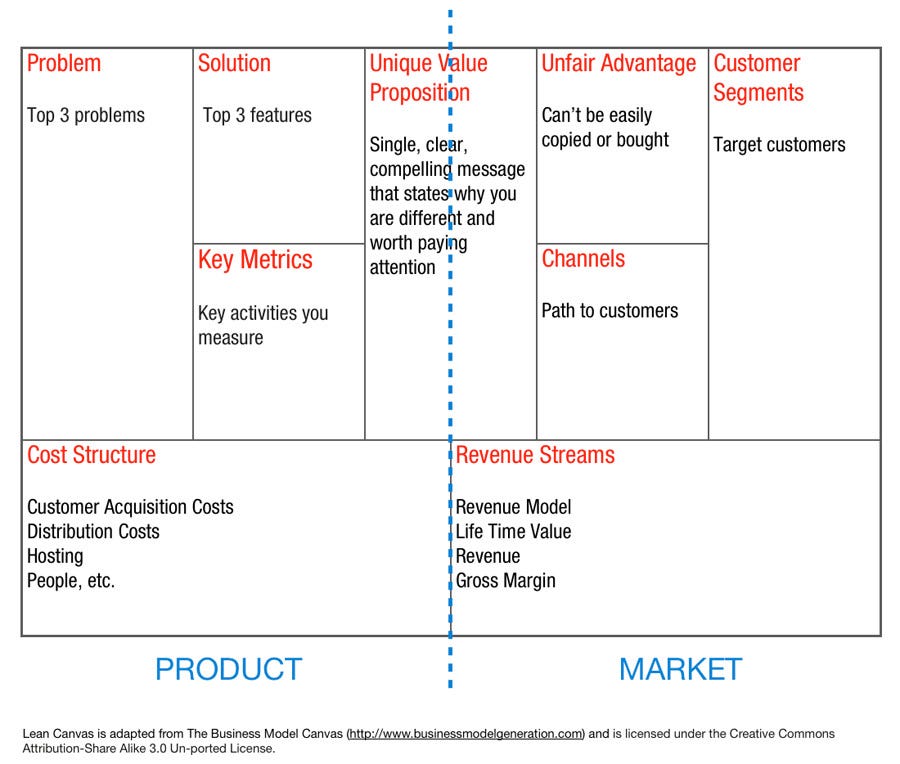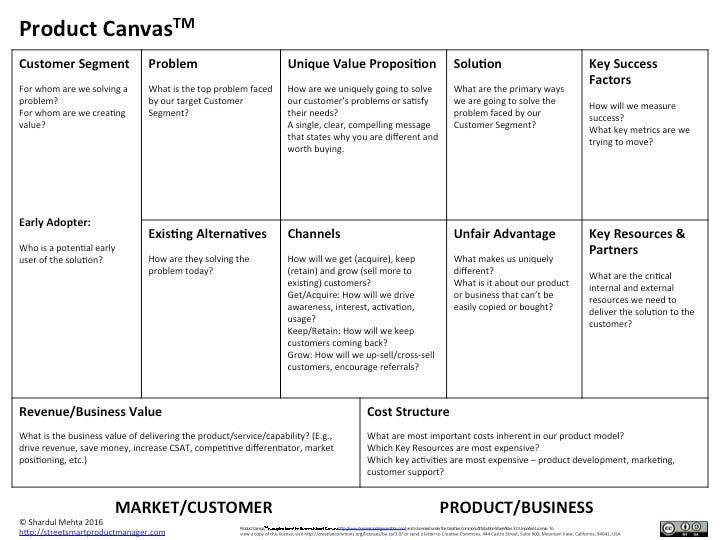Making Sense of All Product Canvases Under the Sun
As we begin preparing to plan for a new release in my team, I am racking my head on using the best possible tools to get started, especially when a ton of data collected from various internal and external sources have swamped us. Over the years, I have learnt that the easiest way to declutter your mind and think with clarity is to start with a product canvas.
This is not a post though on what a product canvas is. This post is more about laying out all the popular product canvasses available there and deciding what works for you. For the uninitiated, I have provided a few links at the end to get you started on product canvas. So, I will be brief in my explanation here.
The world has moved way ahead from building products traditionally using heavy business documents - business cases, MRDs, PRDs, which have become irrelevant today. The earlier business documents were based upon the assumption that you ought to have all the information about a product right at the beginning before even a line of code was written. But this is far from truth. In the world of Lean and Agile, there are no facts but hypothesis, no guarantees but learning to live with uncertainties. It has taken us a long time to embrace this attitude of humility towards building products.
Instead of writing copious amount of content on MRDs, we now have single page documents called canvases that capture vital pieces of information necessary to create a new product: users, customers and their needs, markets etc. Capturing vital elements of a product plan succinctly in a single page is more effective in understanding the product scenario and making sound decisions. Hence, this artefact is more compelling in communicating the proposal to the stakeholders and achieving shared understanding across the teams.
Business Model Canvas by Alex Ostwerwalder
The first canvas ever that got introduced to the world was Alex Osterwalder’s Business Model Canvas. It effectively laid out a backbone towards planning a business within 9 different blocks as shown below:

Lean Canvas by Ash Maurya
Later on, there were a few canvases introduced that narrowed the focus from businesses to planning to build software products. The most popular of all was Ash Maurya’s Lean Canvas which was an improvisation upon Alex Osterwalder’s Business Model Canvas. Ash divided the canvas into two areas to separate the focus between product and market.

Do read Ash Maurya's book Running Lean to understand Lean Canvas in detail. The book has been recommended multiple times by many of my guests on my podcast.
However, there were other variants of product canvases that were offered by product leaders like Shardul Mehta and Roman Pichler. Both Shardul and Roman have been guests on my podcast before.
Product Canvas by Shardul Mehta
In this version Shardul puts the customer and market on the left hand side to capture market opportunity. This helps you to start with the customer and their problems on the left, and work your way toward the right to ultimately figure out how you are going to deliver on the solution.

Product Canvas by Roman Pichler
This is a sample canvas by Romana depicting a game product that helps children enjoy music and dancing.

Read more http://www.romanpichler.com/blog/the-product-canvas/:
The sample Product Canvas above contains the product name, the product (or release) goal and the metrics to measure if the goal has been met. The first bigger section states two personas characterising the target users and customers with their needs. The next section sketches important aspects of the product using epics to describe the product’s functionality, a mock-up to capture the user interface design, a storyboard to illustrate the user interaction, and a constraint card to express the platform for which the game is developed. The section on the right provides a goal for the next sprint and the details necessary to reach the goal.
Here is the template with different sections explained:
You must read Roman’s detailed description about the canvas at http://www.romanpichler.com/blog/the-product-canvas/
But before you even get there, Roman provides a canvas for reviewing the product vision.
Opportunity Canvas by Jeff Patton
http://jpattonassociates.com/opportunity-canvas

Opportunity Assessment
There was something else we followed in my previous organization called Opportunity Assessment popularised by Marty Cagan. According to this, product managers need to answer 10 basic questions to help validate a product’s success:
1. Exactly what problem, in the context of the customer's job to done, will this solve? (value proposition)
2. Testable Working Assumptions (about market, competition, technology etc.)
3. For whom do we solve this problem? (target market)
4. How will we measure success? (business metrics)
5. What alternatives are out there in the market? (competitive landscape)
6. Why we are best suited to pursue this? (our differentiator)
7. Why now? (market window)
8. What is the preliminary estimated cost? (small/medium/large)
9. What are the minimum requirements in prioritized order? (Epics)
10. Given the above, what’s the recommendation?
Given so many choices, how do you then decide which product canvas template to use for your product. The answer is it depends upon what vital information your stakeholders would want to see for them to be able to make a decision. If there is new information that needs to go, you may tweak one of the above canvases to suit your purpose. But be rest assured that the canvases shared above have been used hundreds and thousands of times across the world in product organisations and thus can be used as is.
There is also a question about the scenarios in which these canvases can be used - whether it applies to new product development or features? The answer is product canvases can be applied to most new initiatives and large epics along with new products. Smaller epics and user stories need not be reviewed through product canvas.
Please let me know your thoughts around this topic.
Let me end this post by sharing with you the podcast episode with Shardul Mehta where he explains product canvas in detail:


